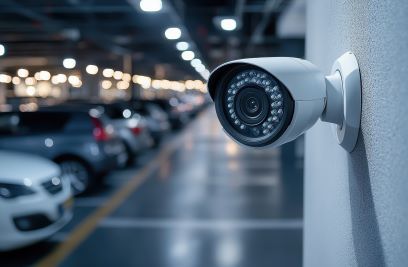Back to Basics is an article series that highlights important but possibly overlooked information facilities management professionals should know.
Facilities management and security professionals whose facilities include parking garages should take steps to increase the security of these structures, which have their own unique challenges. Many busy facilities have parking garages because more vehicles can be accommodated in a specific amount of square footage than in a surface parking lot.

Parking garages can be found in a variety of settings, including:
- Educational—colleges and universities
- Healthcare—large hospitals
- Entertainment—large sports arenas, convention centers, and resort casinos
- Business—shopping malls, office complexes, city downtowns, and town centers
- Mass transportation—near airports, as well as major train, subway, and bus routes
Parking garages have more safety and security issues than surface parking lots because they:
- Are partially or fully enclosed, making it easier for criminals to hide because it’s harder for people to view all areas of the garage;
- Feature ramps that allow vehicles to travel between floors, which means vehicles have more blind spots;
- Usually have unique design elements such as lobbies, stairwells, elevators, and restrooms; and
- Require appropriate access control for pedestrians and vehicles.
Ways to Increase Security
It is important for facilities management and security professionals to work together on problems at the specific parking garages they work in and use Crime Prevention Through Environmental Design (CPTED) to come up with possible solutions.
The four principles of CPTED include:
- Natural surveillance. Increase natural surveillance including adding windows, open-air areas, lighting, and remove obstructions to improve sight lines.
- Natural access control. Provide doors, fences, shrubs, and other elements to help keep unauthorized people out of restricted places.
- Territorial reinforcement. Produce clear boundaries between public and private areas using pavement treatment, signs, art, and good maintenance.
- Maintenance and management. Choose materials that can be more easily maintained over a long period.
Using the principles above, facilities and security professionals should consider how to use these to increase safety.
In addition, the U.S. Whole Building Design Guide has several specific recommendations when it comes to parking garages. Here are some of them:
- Lighting is important for pedestrians and vehicles. Facilities and security professionals should ensure there are no areas with shadows where someone could hide by promptly replacing any burned-out lights. They should also make lighting vandal-resistant and easy to maintain. To save money and energy, facilities and security professionals should consider following Federal Energy Management Program-designated lighting.
- Signs and graphics such as directional, informational, and exit signs are necessary for pedestrians and vehicles. This signage should include security cameras in use (if applicable), accessible parking, fire lanes, no-parking areas, pedestrian crossing, and stop signs. Facilities and security professionals should also consider installing colorful signs on concrete pillars, so visitors know the garage name, level number, and row number. Additionally, the signs should encourage visitors to take photos with their cell phones so they can easily find their vehicles. This is important to minimize the time visitors spend walking in garages, so they are less vulnerable to attackers.
- Panic buttons and emergency phones should call to the security office or local law enforcement and provide the ability for people to speak directly with them. Facilities and security professionals should be able to determine which button was pressed and where the visitor is located and should consider an emergency blue light system.
- Video and audio surveillance is a costly option, but it can be important in responding to emergencies in real time and reviewing footage. Security should install cameras in lobbies, elevators, and stairwells. If the facility has pay stations, where money and credit cards are accepted, on each level and/or at exit gates, security should ensure there is proper camera coverage for them, as well. Garage surveillance can also be used to provide asset security, monitor employees, view suspicious activities like vehicles in odd locations, locate suspicious or missing people, deter vandalism, catch people who are escaping the garage without paying, and to deter people from doing illegal or inappropriate activities in a public setting.
- It’s important that security personnel be present in high-risk facilities. Uniformed security officers in marked vehicles can drive around the garage levels or simply walk around the garage to help deter crimes and be visible to everyone. Access control should be provided by using security booths and traffic control gates to manage vehicular and pedestrian access. Facilities and security professionals should utilize fencing to prevent access to obscure places (like underneath the staircases) where someone can hide, as well as consider having appropriate access control measures to prevent access to storage, security, and utility areas. Consider whether it is better to have these areas accessible using lock mechanisms, keycards and key fobs, biometrics, or a combination of the three. To learn more, check out the “Access Control Technologies Handbook” from the U.S. Department of Homeland Security.
Facilities and security professionals should do whatever it takes to increase safety and security for those utilizing parking garages on their properties.
